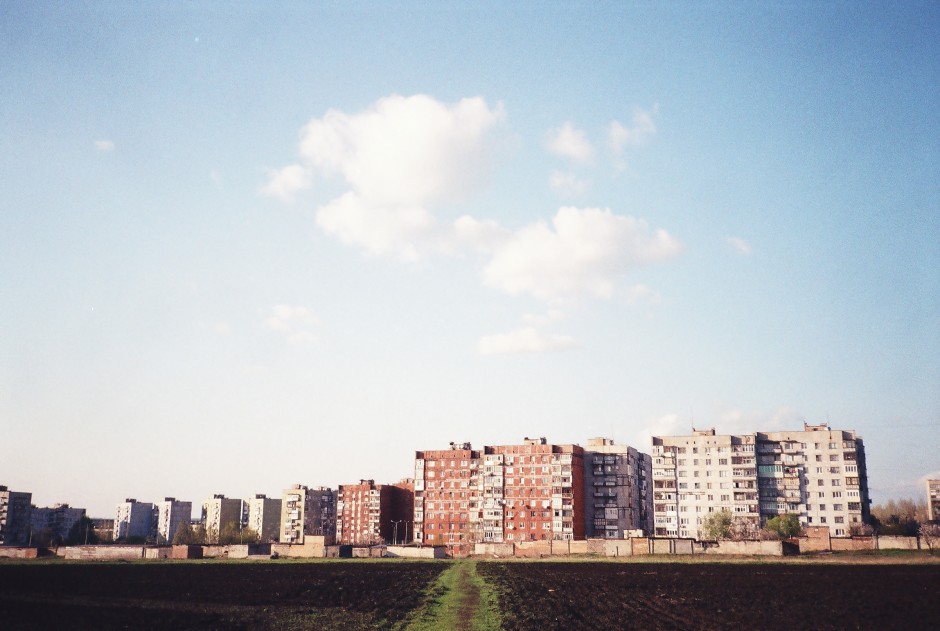
Beautiful rubble of rural Ukraine
It doesn't take long to get out of town. The urban-rural divide often times is merely a sidewalk or, in this case, a concrete wall. Summertime bicycle rides around the fields, especially in early August, when the sunflowers are in bloom, are one of my favorite things to do. This past September I stumbled upon a farmer whose land I was told I shouldn't be on. But after I explained the accident, and after he realized I was American, he took me to a barn where we chatted over a few glasses of samigon, or moonshine, and washed them down with pickles.
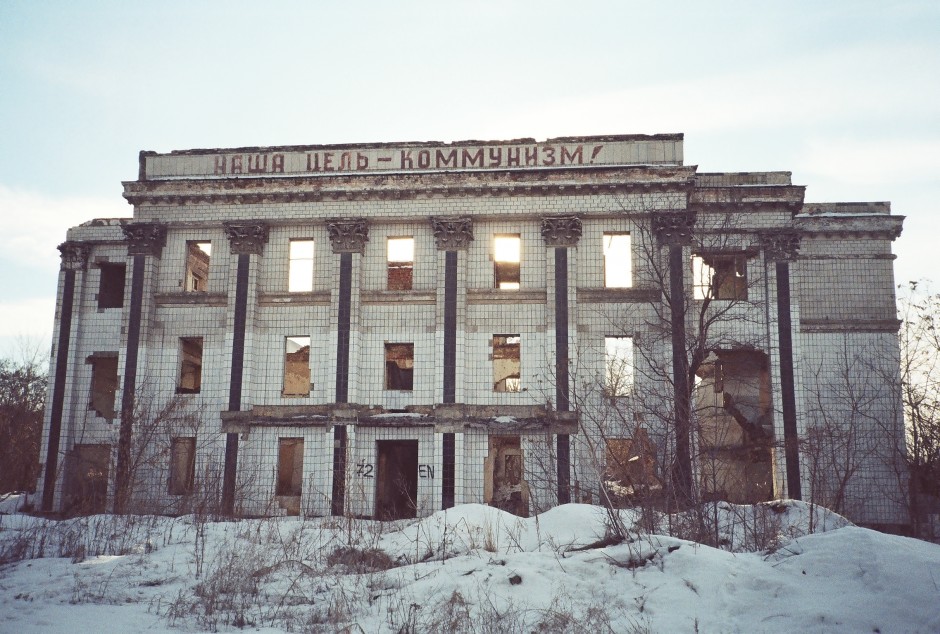
Beautiful rubble of rural Ukraine
"Our Goal: Communism!" This former glass factory administration building in Konstantinovka reminds me of the Soviets' great ambition. Before the fall of the U.S.S.R., the city was home to some of the country's most productive factories, including the highest-producing glass factory. Twenty-five years ago this was a model for the rest of the country. Now it's more of a scar.

Beautiful rubble of rural Ukraine
I'm not sure if there's anything worse than riding a packed marshrutka on a hot summer day. On a trip from Donetsk to Novoazovsk one August, there were 40 of us wedged into a bus meant for 18. The temperature outside was 104 degrees Fahrenheit (40 Celsius), and no one would open a window or vent for fear of skvazniak, or literally "the draft," which Ukrainians believe will bring you sickness. This photo, taken during a ride from the salt mining town of Soledar to Artemovsk, offered the rare chance to photograph a marshrutka with its windows open.
Intermission
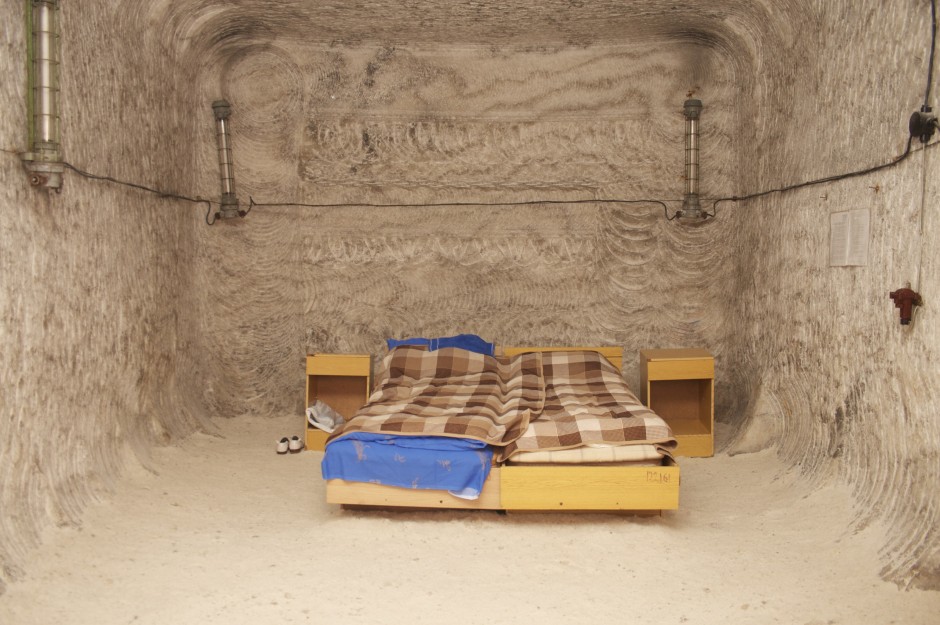
Beautiful rubble of rural Ukraine
I spent four hours last July resting inside Soledar's speleosanitorium to see what it was all about. Friends spoke to me of its rejuvination capabilities. People with respiratory problems and body aches visit the sanitorium, which is housed inside the Soledar Salt Mine 288 meters below ground, for days, even weeks at a time. The salt in the air is supposed to help suppress wheezing and joint pain. While I can't be certain it was the salt that did it, or simply the relaxing atmosphere, I will say that I left feeling better than I did that morning.
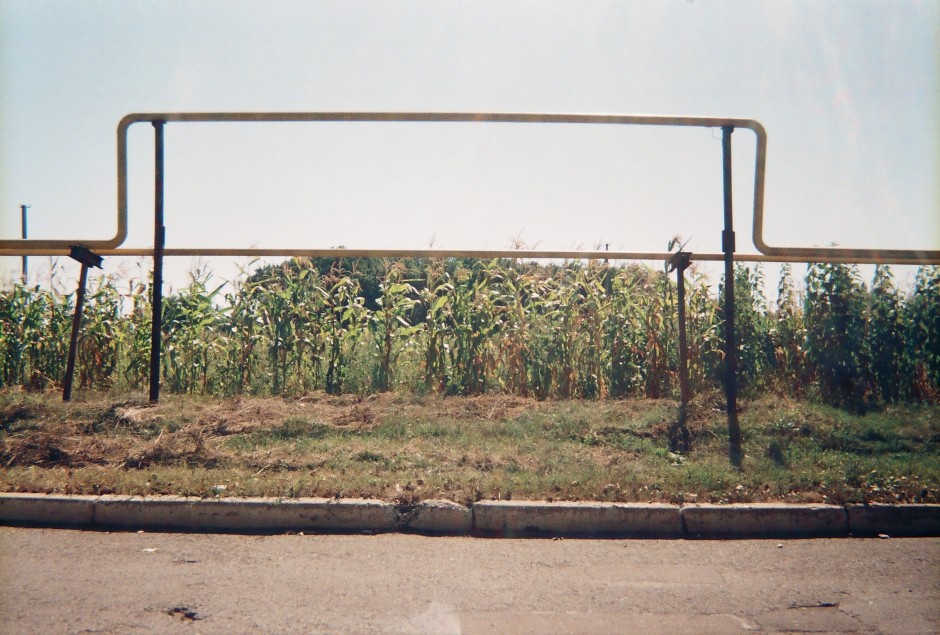
Beautiful rubble of rural Ukraine
The Red Village, where I worked as a teacher for more than a year, will always exist in my mind as a maze of pipelines. Throughout the village of 1,000 residents, these gas piplines twist and turn into all sorts of shapes, bending for carports and fence posts. Follow the yellow one, and you'll end up at the school. In my first few weeks there, that's how I remembered where to go.
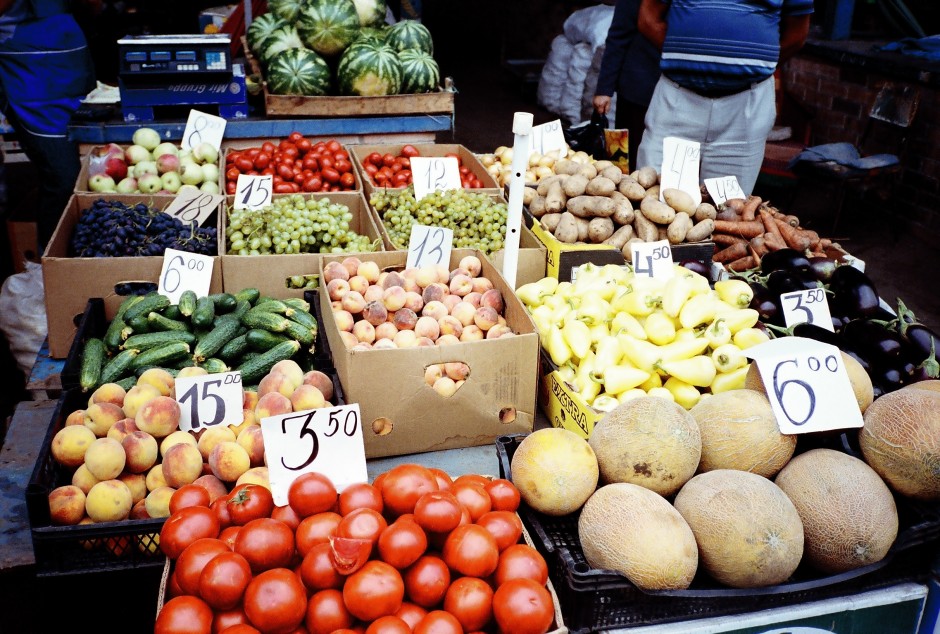
Beautiful rubble of rural Ukraine
After a long, cold winter eating mostly potatoes, carrots, beets and cabbage, summer is a very welcome reprieve. Markets overflow with apples, pears, cherries, plums, watermelons and an assortment of peppers and tomatoes. And with local farmers competing against each other, you can get all of it for cheap. A kilo of tomatoes, for example, can cost a mere 44 cents.
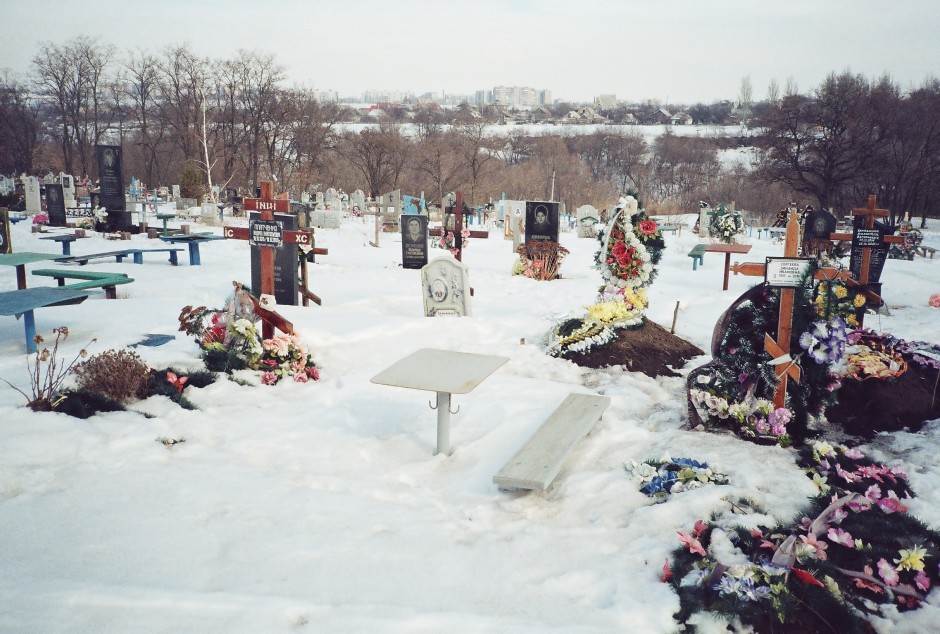
Beautiful rubble of rural Ukraine
I stumbled upon this one in Konstantinovka on an afternoon walk the day after a heavy snow. In eastern Ukraine, it's not their age that makes the cemeteries spooky, but rather their placement on the quiet outskirts of towns and the lifelike portraits adorned on the headstones - I swear I've seen the eyes follow me. The tables scattered throughout the cemetery exist for families who often come to share an afternoon picnic among the dead.
Intermission
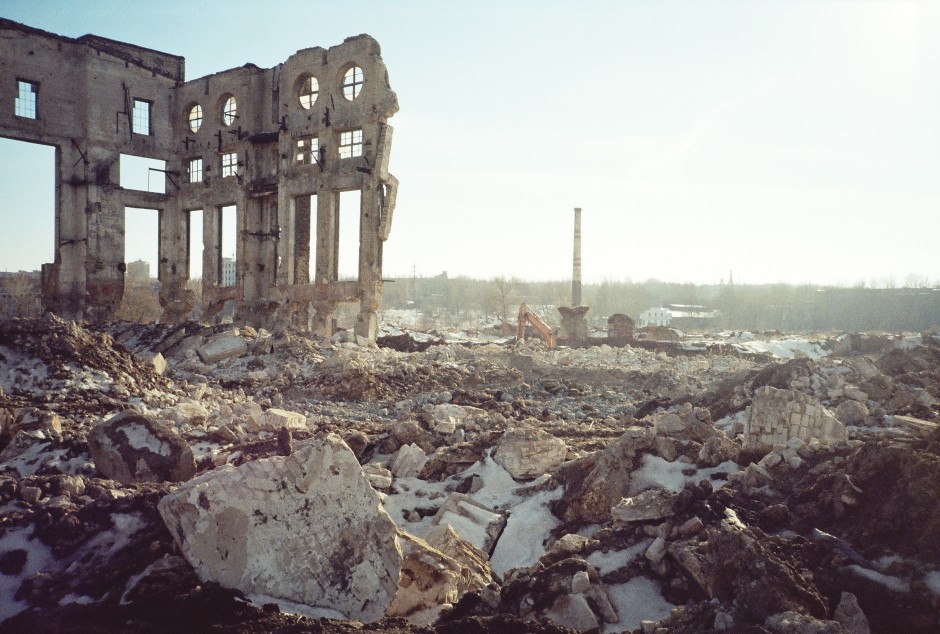
Beautiful rubble of rural Ukraine
Before the fall of the Soviet Union, the city of Konstantinovka bustled with more than 20 factories, which provided tens of thousands of jobs. Today, less than a handful of factories remain in operation. Defunct factory rubble in this former industrial titan of a city is everywhere now. While being rather depressing, I still find it interesting to think about what it must have been like 25 years ago, when it played a major role for the Soviet Union. Could they not have seen this coming?
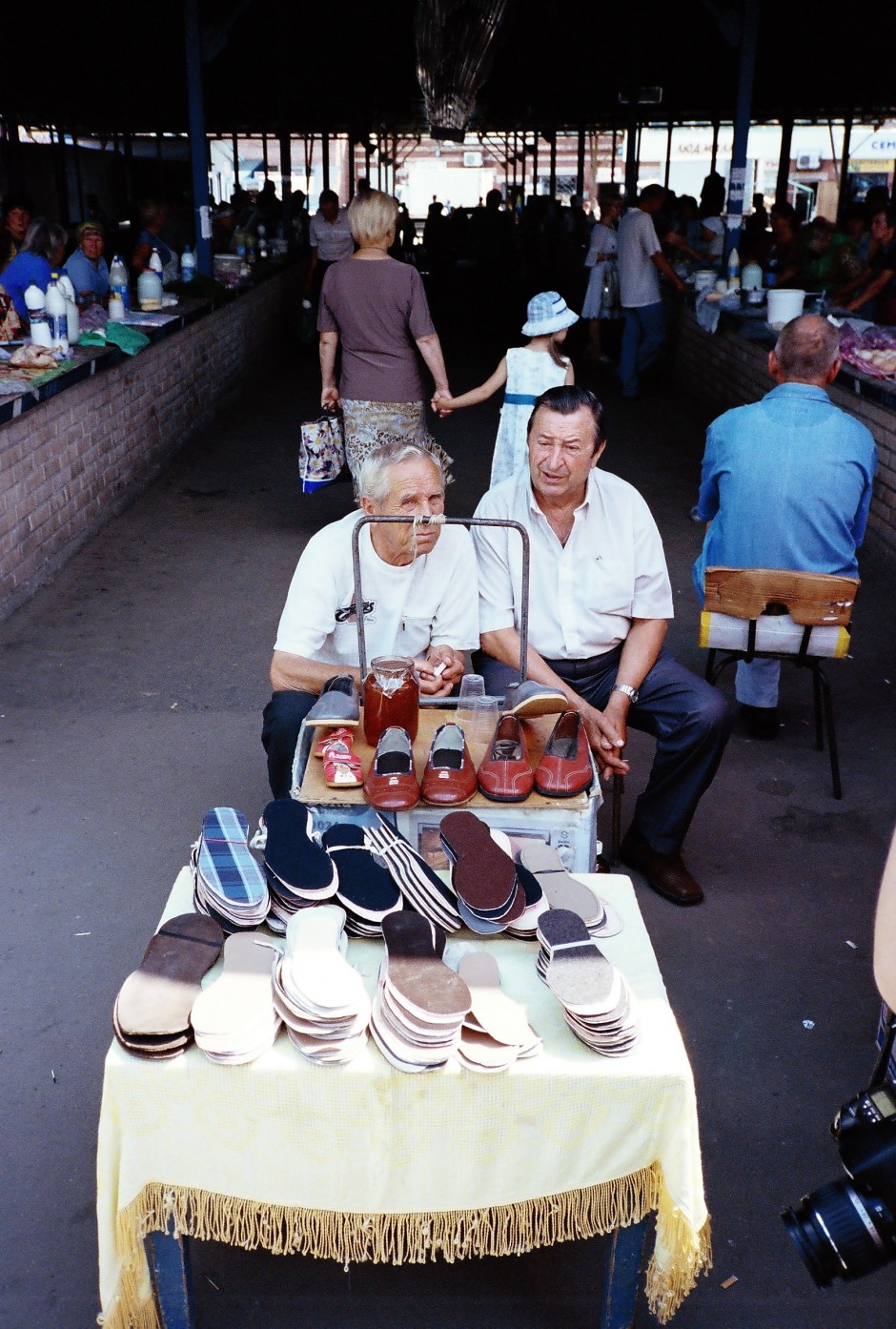
Beautiful rubble of rural Ukraine
These are the Artemovsk market insole guys. For weeks they worked on me, trying to convince me my feet needed more support, my shoe a softer base. Eventually, I gave in, mostly because the insoles only put me out 14 hryvnia, or about $1.75. And with that I made their day. As long as I've been here - nearly two years now - these guys have been sitting here, selling insoles and chatting people up. I'm sure they enjoy doing it, to some extent. But really they do it because they need the money to subsidize their meager pensions of just $80 a month, which in rural areas might cover on month's rent for a one-bedroom apartment.

Beautiful rubble of rural Ukraine
For a year I shared a small office with Olya, the Red Village School's psychologist. During that time we must have drank twice our weight in tea while chatting about our favorite and most loathed students. She drank hers with four cubes of sugar, while I enjoyed mine without.
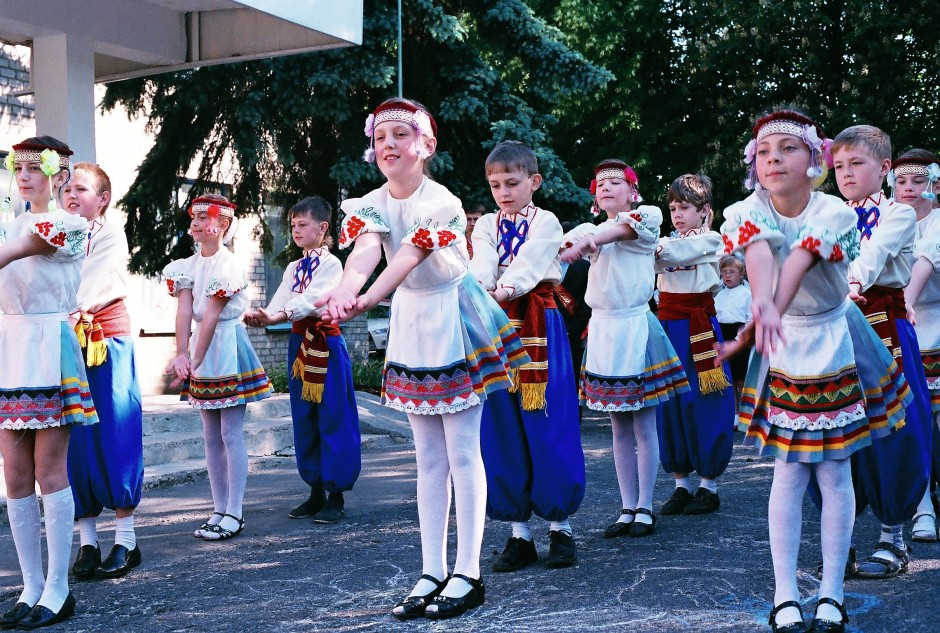
Beautiful rubble of rural Ukraine
Students dressed in traditional Ukrainian costumes perform during the Last Bell ceremony outside the small Red Village School. Each year students celebrate the last day with dances, musical performances and skits. At the end, a student of the first class, along with a student of the eleventh class, ring a bell together, signaling the beginning of summer holiday. The teachers on the other hand, toss back a few shots of vodka or cognac in the teachers lounge. However, ask any of them what they'll be doing on their summer holiday and you'll get the same answer: "I will have a rest."
Intermission

Beautiful rubble of rural Ukraine
Even though the U.S.S.R. is no more, ex-Soviet Ukrainians celebrate the war victories of the Red Army. In this photo, veterans of the Great Patriotic War (WWII) straighten each others' medals before the annual Victory Day Parade in Artemovsk. Every year on May 9, Ukrainians celebrate the surrender of Nazi Germany to the Soviet Union with ceremonies, carnivals, dances, barbecues and, of course, plenty of vodka.
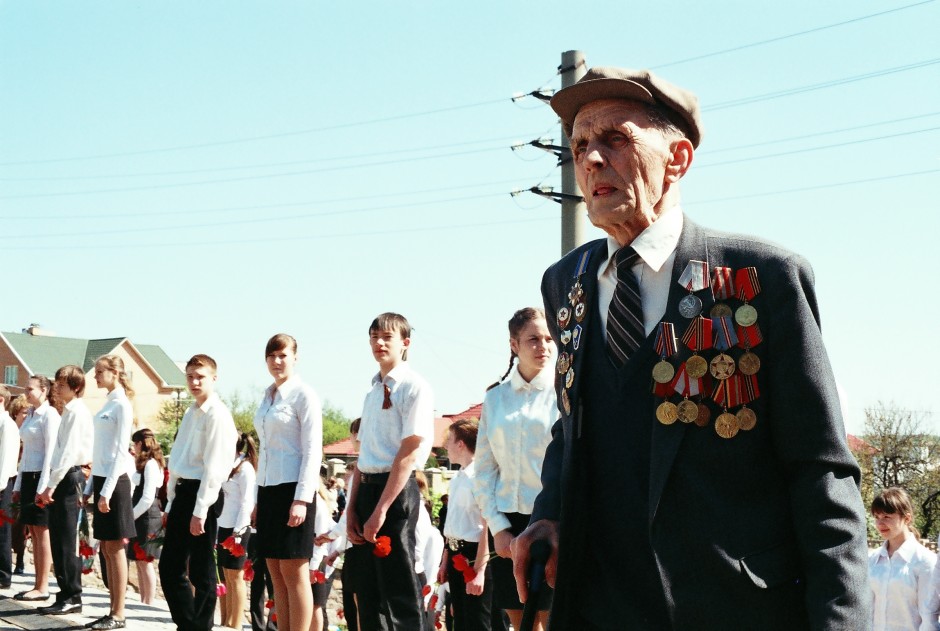
Beautiful rubble of rural Ukraine
One thing I love about Ukraine is the amount of holidays it celebrates and the pomp and circumstance that comes with them. Day of Motherland Defenders, Women's Day, Day of Students, Day of Knowledge, Old New Year, and a number of days in honor of armed forces. Victory Day is celebrated every May 9, with parades, fireworks, carnivals, speeches, food and booze. This veteran of the Great Patriotic War (WWII) was being honored for his bravery in fighting against fascism.
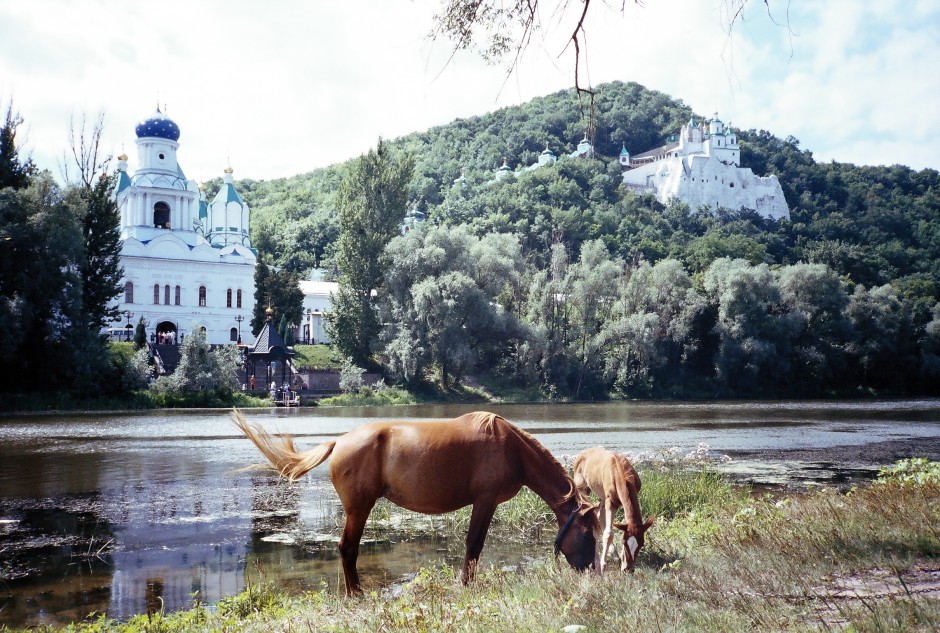
Beautiful rubble of rural Ukraine
These horses weren't wild, but I thought the setting with them feeding near the Seversky Donets River was beautiful. In the background the Svyatogorsk Monastery sits atop the hillside. Ukrainians and Russians make the pilgrimage to the monastery every year on Orthodox Easter to be blessed. In the summer, people from all over come to bask in the sunshine, swim, camp and cook shashlik - Ukrainian barbecue.
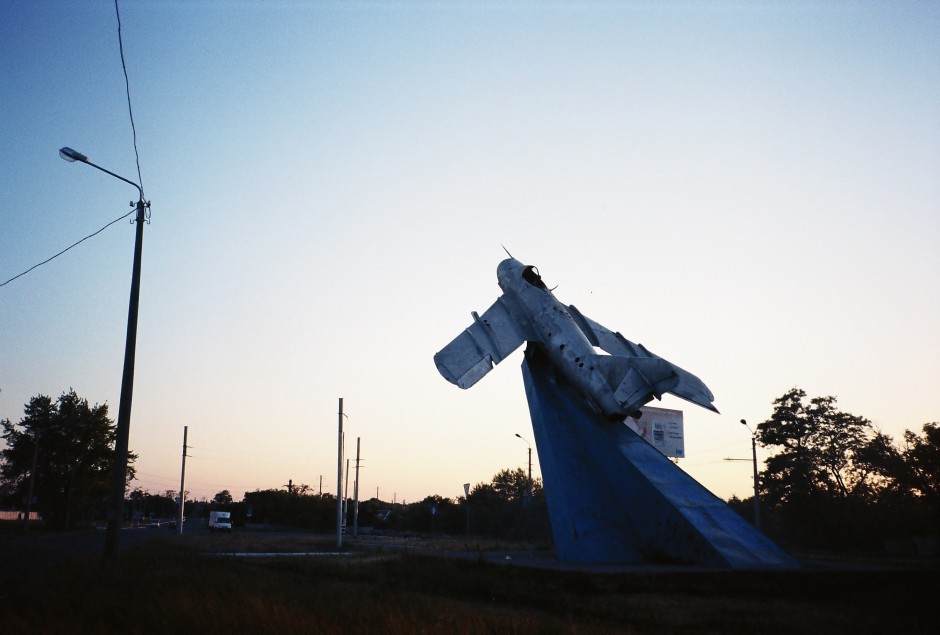
Beautiful rubble of rural Ukraine
This defunct Soviet MIG, a monument to those who fought and died in The Great Patriotic War (WWII), was the first thing I saw when I arrived in the eastern Ukrainian town of Artemovsk a year and a half ago. Besides marking the entrance to the town of about 20,000, it reminds me each time I pass it that I live in what used to be the Soviet Union.
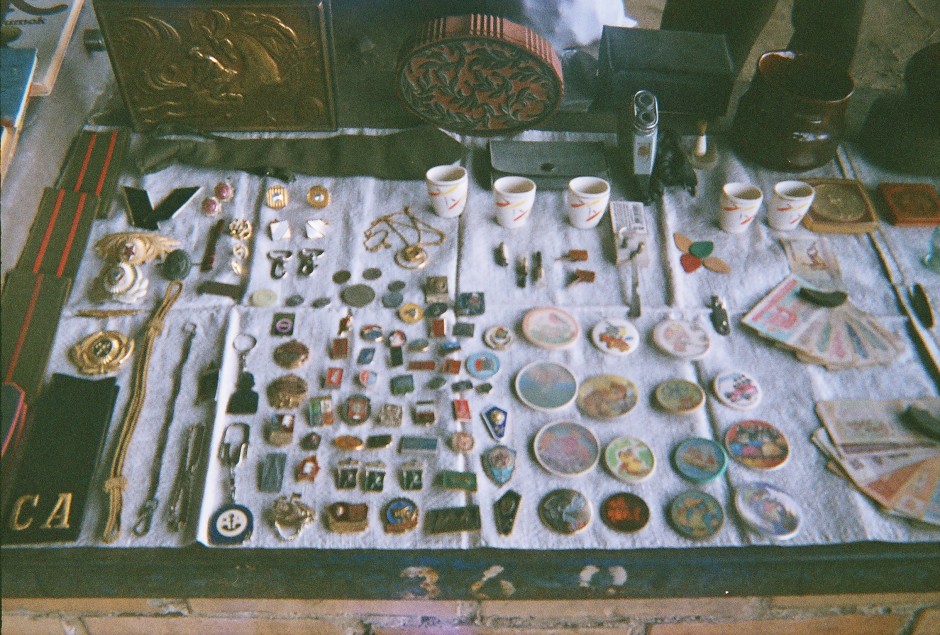
Beautiful rubble of rural Ukraine
Some of my most rewarding and interesting afternoons have come as a result of strolling through the markets. There, trinkets abound. War medals, Soviet-era money, region pins and more are sold for cheap, and sometimes with a story about where they came from. While buying a Leningrad (St. Petersburg) pin from an older man I heard his tale of fighting in the Red Army near Stalino (Donetsk). "I lost a lot of my childhood friends there."

Beautiful rubble of rural Ukraine
I spent a weekend last October with a group of men that work Torez's small-scale illegal mines, called kopanki. Before meeting them I stopped at this mine, which is actually operating legally. But the four men working it refused to speak to me, fearing that I'd report possible violations to authorities. Coal remains in Torez, despite most of the large-scale operations being shuttered shortly after the fall of the Soviet Union. But many believe that less than 10 years worth is left. It's uncertain what will happen to the city and its residents when there's nothing left to mine.
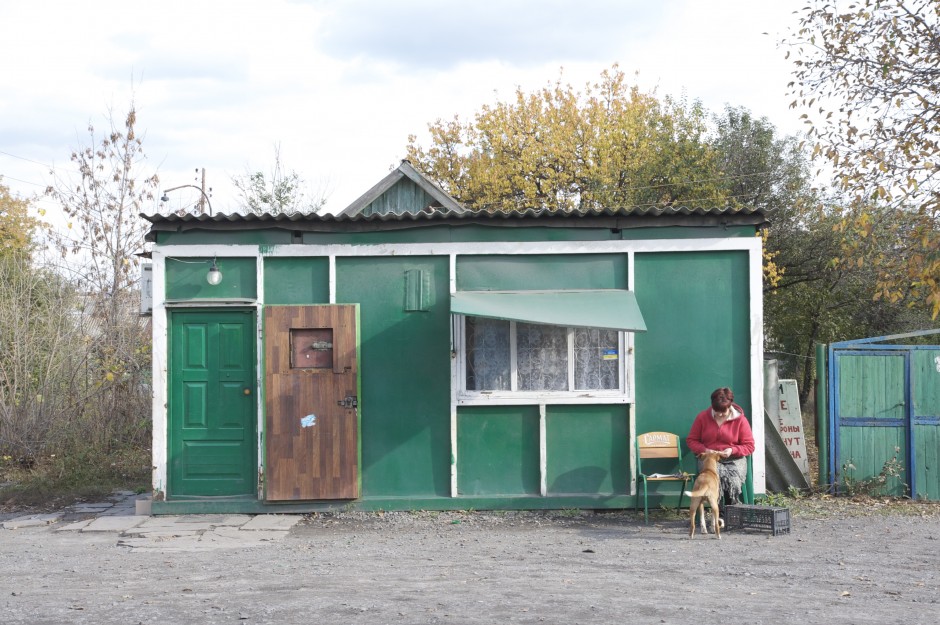
Beautiful rubble of rural Ukraine
Packs of wild dogs roam the suburban and rural areas of Ukraine. This was one of the things that caught my eye when I arrived here. Luckily for them, many friendly babushkas and shopkeepers - like this one in Torez - help them out when trash scraps are hard to come by.
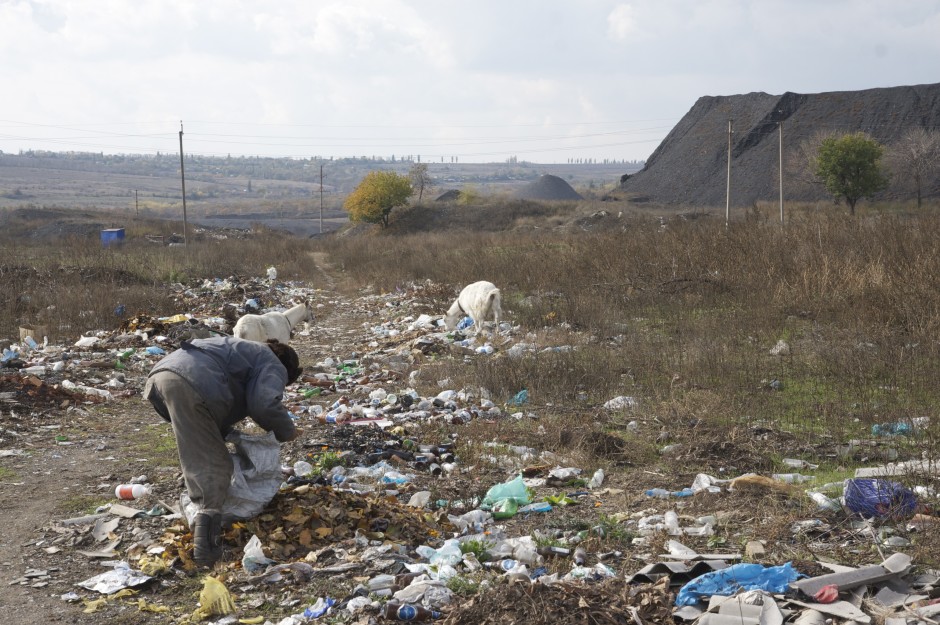
Beautiful rubble of rural Ukraine
Trash. There's a lot of it in Ukraine. Despite Ukrainians complaining about it and always telling me how much they love "the nature" in their country, on a daily basis I watched them toss wrappers and bottles into their city's streets. The bottles, at least, often get picked up. Many people, such as this man in Torez, collect the glass to exchange at recycling centers for 5 kopeks (less than one cent).

Beautiful rubble of rural Ukraine
There's no better symbol of Ukraine's industrial east than a factory smokestack, unless, perhaps, sunflowers surrounded that smokestack. It's a strange contrast, but both will forever remind me of my time here. I couldn't begin to count the times I watched the sunset and smoke billow out from a nearby factory at the same time.
